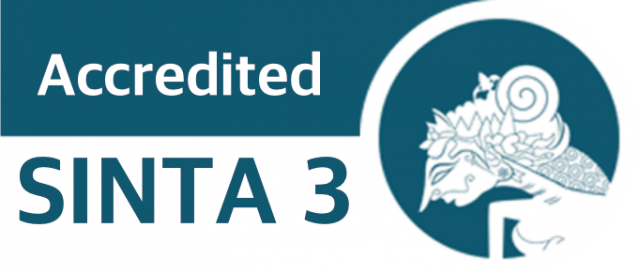Ketika Peneliti Mencemari Risetnya: Isu Refleksivitas Internal pada Etnografi
DOI:
https://doi.org/10.24114/antro.v10i2.56122Keywords:
etnografi, reflektivitas, bias, lensa teori, hubungan peneliti-partisipanAbstract
Etnografi menderita suatu krisis representasi internal. Krisis itu bermakna bahwa setiap pengetahuan yang diproduksi oleh etnografi merupakan sekedar pandangan relatif milik individu peneliti yang berada di balik catatan lapang dan analisa. Walhasil, tidak ada suatu ˜kebenaran objektif™ mengingat produk etnografi terikat oleh jarak pandang, konteks dan konstruksi-kognitif sang peneliti. Kritik tersebut mendiskreditkan etnografi sebagai suatu metode ilmiah yang gagal mencapai tujuan asasinya. Inilah yang menyebabkan banyak ilmuwan sosial menghindari atau bahkan menolak penggunaan etnografi ke dalam proses investigasi keilmuan mereka. Studi ini merespon kritik tersebut dengan menganalisa reflektivitas dalam penelitian etnografi. Dua jenis reflektivitas, yakni reflektivitas teori dan reflektivitas relasi peneliti-partisipan menjadi focus utama. Pada yang pertama ia membentuk pertanyaan penelitian hingga kesimpulan melalui asumsi-asumsi rasional. Adapun yang kedua memberi dampak pada penelitian melalui perbedaan subjektivitas yang dihasilkan peneliti atas kedekatan atau jarak diri dengan partisipan dan konteks penelitian. Reflektivitas menjadi penting agar peneliti etnografi dapat secara seksama mempertimbangkan aspek-aspek itu dan kemudian melakukan tindakan sadar-aktif dalam mengompensasi potensi bias atau pembatasan dalam proses penelitiannya.References
Barak, A. (2022). Fusing horizons in qualitative research: Gadamer and cultural resonances. Qualitative Research in Psychology, 19(3), 768-783.
Burawoy, M. (1979). Manufacturing consent: Changes in the labor process under monopoly capitalism. University of Chicago Press.
Choy, L. T. (2014). The strengths and weaknesses of research methodology: Comparison and complimentary between qualitative and quantitative approaches. IOSR journal of humanities and social science, 19(4), 99-104.
Etherington, K. (2007). Ethical research in reflexive relationships. Qualitative inquiry, 13(5), 599-616.
Karnieli-Miller, O., Strier, R., & Pessach, L. (2009). Power relations in qualitative research. Qualitative health research, 19(2), 279-289.
Hammersley, M. (2018). Routledge revivals: What's wrong with ethnography?(1992): Methodological explorations. Routledge.
Hardiman, F. B. (2015). Seni Memahami: Hermeneutik dari Schleiermacher sampai Derrida. Kanisius.
Jerolmack, C., & Khan, S. (2017). The analytic lenses of ethnography. Socius, 3, p.1-11.
Lillis, T. (2008). Ethnography as method, methodology, and œDeep Theorizing closing the gap between text and context in academic writing research. Written communication, 25(3), 353-388.
Newton, S. K., & Appiah-Poku, John. (2007). The perspectives of researchers on obtaining informed consent in developing countries. Developing World Bioethics, 7(1), 19-24.
Roy, D. (1959). " Banana time": Job satisfaction and informal interaction. Human organization, 18(4), 158-168.
Rahman, M. S. (2017). The Advantages and Disadvantages of Using Qualitative and Quantitative Approaches and Methods in Language" Testing and Assessment" Research: A Literature Review. Journal of Education and Learning, 6(1), 102-112.
Russell, A. (2022). From Methodology to Method in Genre-Based Ethnographies. Written Communication, 39(4), 659-688.
Spradley, J. (2007). Metode Etnografi.
Sulaiman, A., & Supriyanto, S. (2019). Transforming to a Democratic Islamic University: An Application of Futuristic Approaches. J-MPI (Jurnal Manajemen Pendidikan Islam), 4(2), 60-69.
Tubaro, P., Ryan, L., Casilli, A. A., & D™angelo, A. (2021). Social network analysis: New ethical approaches through collective reflexivity. Introduction to the special issue of Social Networks. Social Networks, 67, 1-8.
Downloads
Published
How to Cite
Issue
Section
License
Copyright (c) 2025 Anthropos: Jurnal Antropologi Sosial dan Budaya (Journal of Social and Cultural Anthropology)

This work is licensed under a Creative Commons Attribution 4.0 International License.

This work is licensed under a Creative Commons Attribution 4.0 International License
Authors who publish with this journal agree to the following terms:
- Authors retain copyright and grant the journal right of first publication with the work simultaneously licensed under Creative Commons Attribution 4.0 International License that allows others to share the work with an acknowledgement of the work's authorship and initial publication in this journal.
- Authors are able to enter into separate, additional contractual arrangements for the non-exclusive distribution of the journal's published version of the work (e.g., post it to an institutional repository or publish it in a book), with an acknowledgement of its initial publication in this journal.Penulis.
- Authors are permitted and encouraged to post their work online (e.g., in institutional repositories or on their website) prior to and during the submission process, as it can lead to productive exchanges, as well as earlier and greater citation of published work (Refer to The Effect of Open Access).


